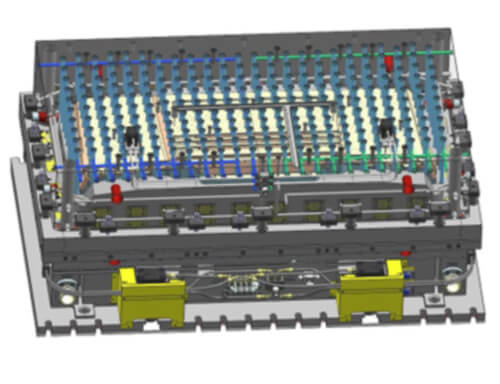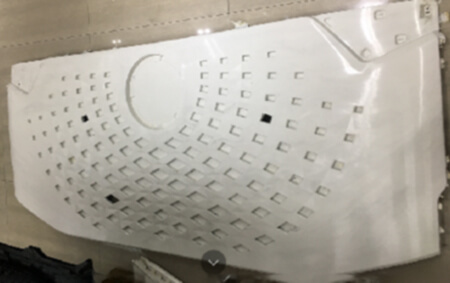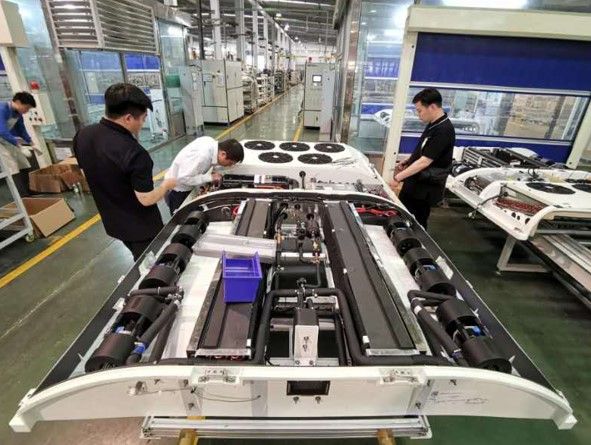
Specialize in Compression molds

Specialize in Compression molds
SMC molding process is an advanced composite molding method, and mold is the basis of the SMC process, good product quality is guaranteed by reliable mold. Therefore, in the SMC molding process, the SMC mold design is especially important. In order to ensure the quality and process feasibility of the product, the shear edge and ejector system of the mold should be designed reasonably.
In this article, we'll learn what SMC mold design is all about so you can better understand why so many companies today are focused on the design capabilities of their manufacturers.


Due to the shrinkage of SMC products after cooling, the products will be tightly wrapped around the mold core and the raised part in the cavity. In order to facilitate the smooth removal of the product and prevent the product from being bumped or bruised during demolding, SMC products should be designed with sufficient demolding slope along the demolding direction on both the inner and outer surfaces.
When designing, the following two aspects should be noted: ① When molding larger SMC products, the release slope of the inner surface is required to be larger than the release slope of the outer surface; ② The common value of the release slope is 1~1.5 degrees, or as small as 0.5 degrees.
The shear edge of the mold is the part where the upper and lower mold bite into each other, which generally requires flame quenching. In the SMC molding process, the shear edge is the raw edge of the product. The raw edge is useless to the product, from this point of view the clearance of the shear edge of the mold can be larger. But the shear edge is too large and easily caused by running and unloading, which can be solved by adjusting the height of the shear edge, that is, in the design of the shear there are two design and adjustable factors, the shear edge clearance and the height of the shear edge. Shear edge is one of the important factors in mold design, whether the size of the shear edge is appropriate directly affects whether the product can be formed and whether there are defects when the product is formed, so it should be strictly required and controlled. See Table 1 for details.
In addition to the use of molded plastic products that require the use of sharp corners, all other corners should be as far as possible to have a rounded transition. The sharp corners of the product is easy to produce stress concentration, in the force or shock vibration will occur rupture, even in the process of demolding due to the internal stress of compression and easy to crack, affecting the strength of the product. In general, the use of rounded corners with a radius of 0.5mm can greatly increase the strength of the product. The advantages of using rounded corners are mainly twofold:
The temperature of the mold directly affects the molding quality and productivity of the products, so a heating system needs to be added to the mold to achieve the ideal temperature requirements. For the SMC mold choose which heating method, according to the existing conditions of each company and mold size, mold cavity complexity and other factors to determine.
In order to improve the wear resistance and corrosion resistance of the mold surface, appropriate surface treatment is often applied to it.
Die chrome plating is a kind of surface treatment method with many applications. The chrome plating layer has sa trong passivation ability in the atmosphere and can keep the metallic lustre for a long time without chemical reaction in many kinds of acidic media. The hardness of the plated layer reaches 1000 HV, which is equivalent to HRC65, and thus has excellent wear resistance. The chrome plated layer also has high heat resistance, and its appearance and hardness do not change significantly when heated to 500 degrees in the air.
The molding method and processing object choose the suitable mold steel according to the different production quantities. SMC mold should choose polished steel with easy cutting, compact structure and good performance.
After the product is molded, the SMC part is separated from the mold when the press is opened. The ejector bar is located inside the SMC mold and is driven by some mechanical (or hydraulic) means, these systems include hydraulic systems and mechanical action systems. There are two types of hydraulic systems in common use, one is the hydraulic system inside the press and the other is the hydraulic system connected to the ejector plate on the die separately. The thickness of ejector plate should depend on mold size, shape and weight. Generally not less than 30mm, otherwise it will cause problems such as top plate deformation.
SMC mold heating hole distribution requires that the gap between the heating hole and the cavity should not be too close or too far, and it is best to keep 40-80mm. heating hole distribution is less in the middle and dense at both ends. If electric heating is used, for electricity, the number of electric heating tubes is a multiple of 3. At the same time, the heating tubes should exceed the distance of the edge of the mold cavity.
Reinforcing ribs are a way to increase the stiffness of your SMC parts. Incorporating them into your mold design allows you to optimize nominal thickness, cycle time and yield. Ribs can be structural or aesthetic. Structural ribs should use a larger introduction radius to improve their function. Regardless of the concern in SMC mold design, reinforcement depth and strength.

MDC has the expertise and experience to design and manufacture molds for your most complex parts. Our customers rely on us to develop SMC molds that meet their specific needs, including
If you have any new projects to make SMC mould, BMC mould and GMT mould, please feel free to contact us.
Contact US
Email: master@zjmdc.com
Tel: +86 576 84616076
Fax: +86 576 84616079
Mobile: +86 13906573507(Mr. Wang)
Address: No.116 mochuang road, Huangyan Xinqian street,Taizhou,Zhejiang,China